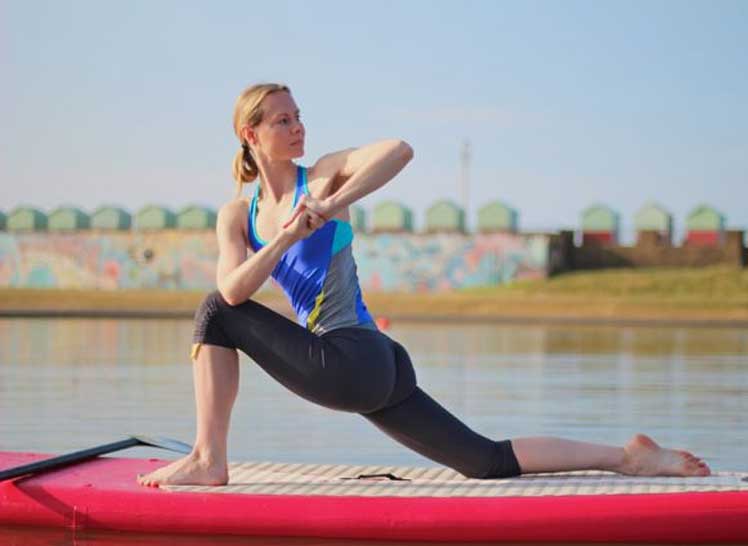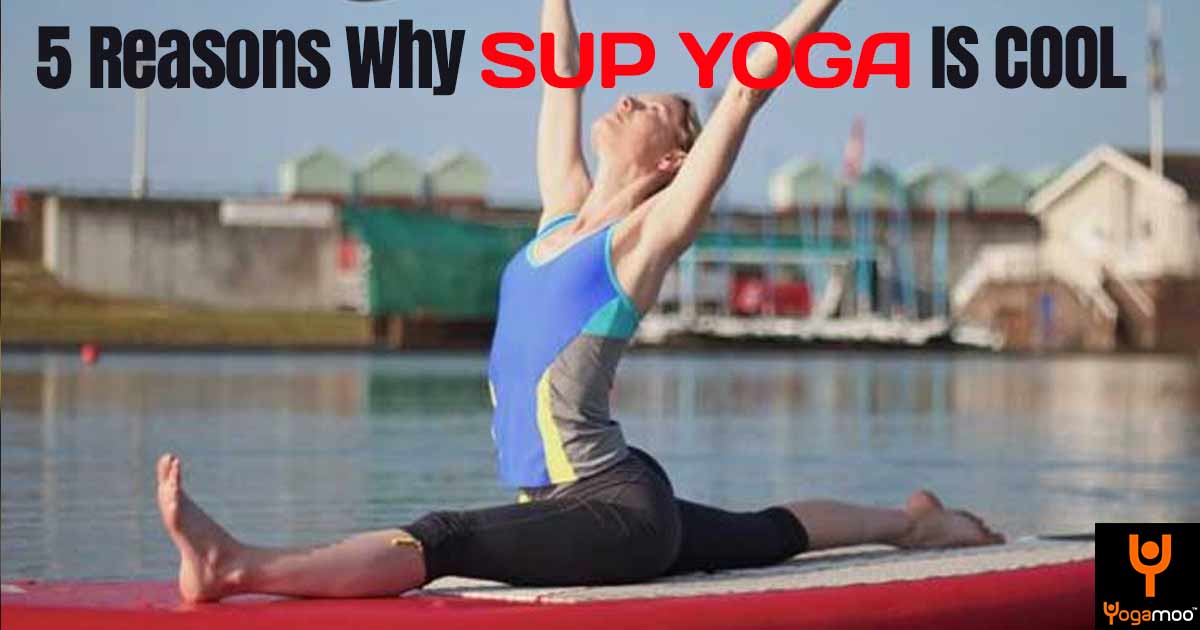As a lover of Yoga and Stand up Paddleboarding combining my passions was inevitable! The board takes the part of your yoga mat and challenges your practice as it reacts to your movements while you float the water.
- Its Fun!
Teaching SUP Yoga is wonderful as I get to see the class giggle and laugh their way through sequences and poses. There is a sense of camaraderie at almost falling in during more challenging poses (but going for it anyway) and a beautiful peace in the floating savasana as any tension is rocked away by the water.
SUP Yoga is a playful interpretation of a land based class, step out of your comfort zone and try something different; you will feel a sense of achievement as well as sore muscles the next day!
- Getting out of the studio
Connect with nature and appreciate that the outdoors isn’t just somewhere that we rush through to get to our destination. I love practicing yoga outdoors and it nourishes both body and mind. Yoga increases serotonin within the body which helps regulate metabolism and this is boosted by practicing outdoors. You will also benefit from negative ions from the water and hopefully some yummy Vitamin D synthesising sunshine! (just remember the suncream).
Enjoy breathing without sharing a room with 20 other people – no smelly, stale air conditioning out on the water, only delicious cleansing air with every inhale.

- Added Focus
Staying dry requires concentration (Dharana)! On a paddleboard as you move the board will react to you redistributing your weight so you have to focus on grounding down through the points of contact (the parts of you touching the board) to balance both yourself and the paddleboard.
Your gaze point (Drist)i is very important to maintain your balance – so no letting the eyes wander or there may be a splash!
- Improve your Balance
OK so one legged balances may end with a swim but with SUP Yoga you have to balance in even the simplest of poses. Your bodily awareness will improve as you will have to adjust your body position without mirrors while balancing on the paddleboard. Without walls there is a feeling of freedom and expansion as your yoga world literally gets bigger.
On the paddleboard your body will constantly be making small muscular adjustments to maintain your balance so you will find the poses and movements more physically challenging, especially as the instability will be engaging your core muscles. Practice within your limits and take less challenging options where you need to – you don’t have to do all of your Yoga in one class. Back on dry land your balance will have improved as your body integrates the balance and proprioception it has gained from the water based class
- Learning to Let Go
This is sometimes the hardest part. In our home or studio we can adjust our mat just how we like it, set the heating just so and have control over our surroundings. In SUPYoga classes we tether the paddleboards using weights so they don’t drift away but the boards will still in reaction to the wind and your weight as we flow between poses. When we challenge ourselves with something new the mind can intervene with distractions such as constantly wanting to reposition the board and paddle. Breathe and let any distractions leave you with each exhale, after all you can always face the back of the board to see the teacher.
Non attachment is key; let go, relaxing and enjoying the experience nobody cares if your poses aren’t picture perfect, if you fall in or wobble – in fact its all part of the experience.

Leave A Comment